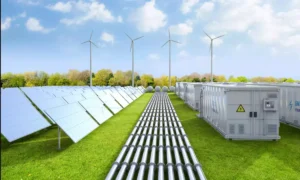If the world wants to reduce the effect of global warming and keep the increase in temperature below 2 degree Celsius, the plan and approach around climate mitigation being implemented is not just transformational for India but needs to be mirrored globally.
New Delhi: COP26 in Glasgow saw India’s Hon’ble Prime Minister make a bold announcement that India will become Net Zero by 2070. Ranked as the third highest emitter of GHGs, transitioning to becoming a green economy is going to be a tall ask, but as we have been witnessing, the country and its citizens are up for the challenge. Many progressive and aggressive policy changes have been brought about to lower the carbon footprint, especially in the six highest polluting sectors of power, automotive, aviation, steel, cement, and agriculture.
According to the United Nations Environment Programme (UNEP), a green economy is a low-carbon, resource-efficient and socially inclusive economy. In these economies, growth in employment and income is driven by public and private investment into economic activities, infrastructure and assets that reduce carbon emissions and pollution, enhance energy, and resource efficiency, and lower the risk of loss of biodiversity and ecosystem. In short, if India is looking to become a green economy, its future economic and sustainable growth need to walk together.






